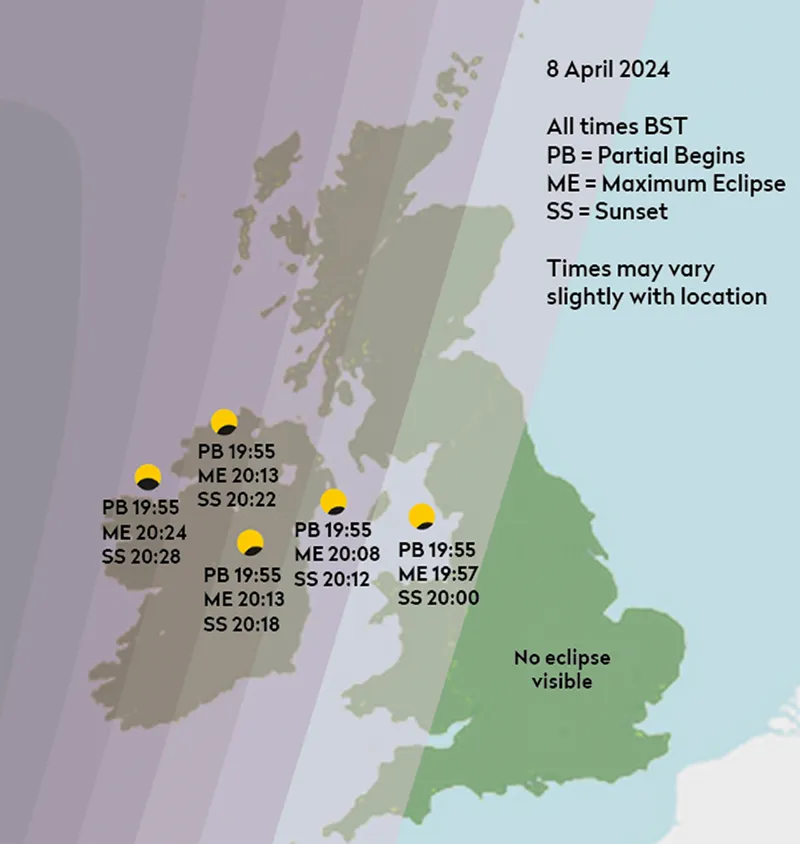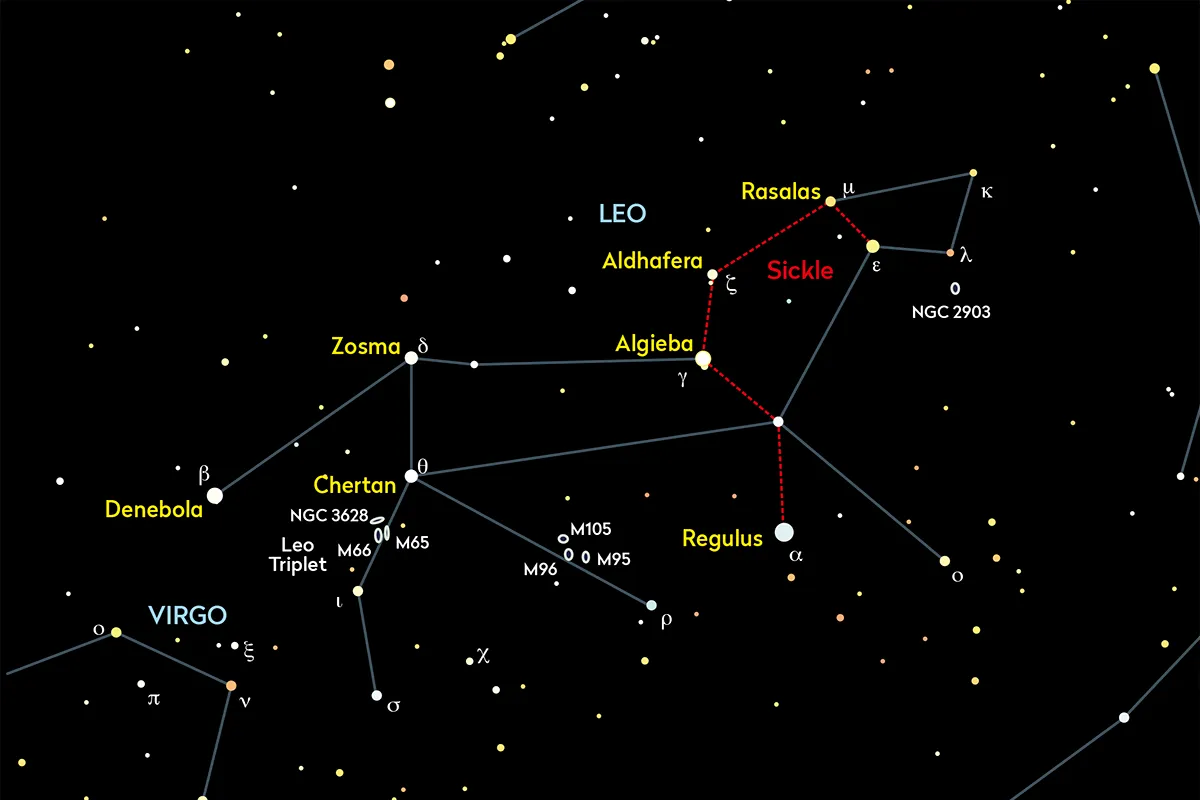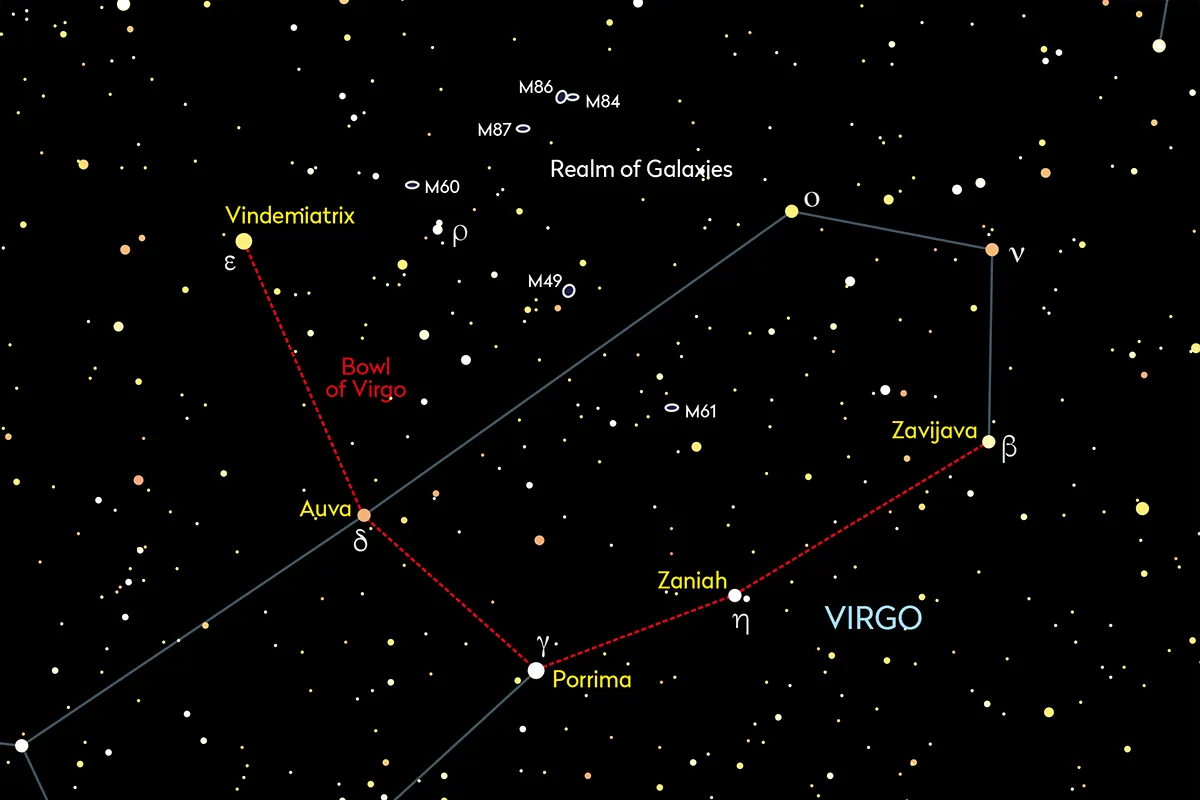In this guide we'll reveal what you can see in the night sky tonight, and throughout the month.
Those of us who enjoy stargazing and observing the night sky can't always plan when and where we're going to get the chance to gaze upwards.
Busy schedules, light pollution, the weather: sometimes finding even just 30 minutes to stand and stare up at a clear, dark night sky and take in the planets, stars and constellations can be a feat in itself.
So when you do find the time, you'll need to know what's visible in the night sky tonight, and the best things to look out for when stargazing.
Complete newcomer? Read our guides to the best telescopes for beginners and astronomy for beginners.
Here's our stargazing guide to what you can see in the night sky tonight.
Our guide is centred around what's visible from the UK, but all northern hemisphere observers should be able to use it, with the odd adjustment to stated times.
In our guide, we use Universal Time (UT) and British Summer Time (BST). UT is the standard time used by astronomers around the world. BST is one hour ahead of UT
We also use RA (Right ascension)and dec. (declination).
These coordinates are the night sky’s equivalent of longitude and latitude, describing where an object is on the celestial ‘globe’.
For help with these, read our guide to celestial coordinates.
For more advice, read our guide on how to stargaze or sign up to receive the BBC Sky at Night Magazine e-newsletter for weekly tips delivered directly to your email inbox.
If you're south of the equator, find out what you can see in the Southern Hemisphere night sky tonight.

What's in the night sky tonight?
April astronomy highlights
- 8 April: Small partial solar eclipse visible from western UK at sunset
- 11 April: Mars and Saturn in conjunction (am)
- 20 April: Jupiter and Uranus in conjunction (pm)
- 22 April: April Lyrid meteor shower peak (unfavourable)
- 29 April: Mars and Neptune in close conjunction (am)
Planets
We finally lose Jupiter and Uranus to the Sun’s glare this month, leaving the planetary table bare. However, there are a number of tricky twilight conjunctions.
On 11 April Mars and Saturn appear 30 arcminutes apart in the dawn twilight. The twilight makes this very difficult to see.
This is also the case with Jupiter and Uranus on 20 April in the evening twilight, mag. 5.8 Uranus 30 arcminutes north of Jupiter.
Finally, Mars and Neptune have a close encounter on 29 April in the morning twilight, with the planets 2.5 arcminutes apart.
Find out more in our guide to observing Jupiter and Uranus in April 2024, and our guide to visible planets in April 2024.
Lyrids
April traditionally marks the end of a long period without significant meteor activity, the Lyrid meteor shower being the first major meteor shower of the season.
The morning of 22 April is the peak of the Lyrids, although the full Moon on 23 April will spoil the show.
Solar eclipse

The theme for April 2024 is that it’s a tricky astronomical month. This is echoed on 8 April when a total solar eclipse will be seen across parts of the United States.
If you’re wondering whether any of this can be seen from the UK, then the answer is yes but not much.
The slimmest of partial solar eclipses can be seen from western parts of the UK at sunset, those in the northwest getting the best views.
For more on this, read our guide on observing the April 8 eclipse from the UK and Ireland.
The Moon
As the Moon re-emerges from eclipse, its growing phase will become evident.
During spring, the phases around first quarter are particularly well positioned after sunset.
On 16 April at 03:07 UT, as the Moon approaches setting, some clair-obscur effects are visible.
Start observing the Moon an hour or so earlier and you should be able to see the letters X and V forming on the Moon’s terminator.
These are known, unsurprisingly, as the Lunar X and V.
Stars and constellations

The stars of spring take centre stage this month with Leo, the Lion leading the march.
The Lion faces west, its tail marked by the line from Zosma (Delta (δ) Leonis) to Denebola (Beta (β) Leonis).
This line points at a large semicircular pattern known as the Bowl of Virgo.
If you have trouble seeing it, imagine a large Y with the bright star Spica (Alpha (α) Virginis) at the bottom of the stem. Inside the bowl you’re looking at the Virgo Galaxy Cluster.
Using a small telescope, try and see some of the myriad galaxies located in this region.
Springtime is known as 'Galaxy Season' among astronomers, because it's a great time to observe galaxies.
The Virgo Galaxy Cluster extends north towards Coma Berenices.

Before reaching the faint triangular form of the open cluster Melotte 111, you’ll find more galaxies courtesy of the Coma Galaxy Cluster.
East of Coma Berenices, and pointed at by following the natural arc of the handle of the Plough away from the blade, you’ll arrive at Arcturus (Alpha (α) Boötis), a bright orange star which sits at the bottom of a large kite-shaped asterism, representing the body of Boötes, the Herdsman.
If you can identify the kite shape of Boötes, look to the east of the widest part.
Here you’ll find the beautifully delicate semicircular pattern known as Corona Borealis, the Northern Crown.
Night sky in April 2024, night-by-night
Tuesday 2 April
Possible naked-eye comet 12P/Pons–Brooks will be visible in the evening twilight this month. The best time to spot it will be at the start of April.
Thursday 4 April
The galaxy-heavy region of sky known as the Realm of Galaxies is well placed in moonless skies currently. Multitudes of galactic smudges can be found in the region within and north of the Bowl of Virgo asterism.
Saturday 6 April
A 9%-lit waning crescent Moon is near Mars and Saturn as they rise above the east-southeastern horizon in the dawn twilight.
Sunday 7 April
The 1%-lit waning crescent Moon approaches Venus as they set around 18:20 BST (17:20 UT). An occultation does occur, but sadly after both have set from the UK.
Monday 8 April
A total solar eclipse crosses Mexico, the US and Canada today. While we won’t experience totality in the UK, it may be possible to glimpse a slim partial eclipse from more westerly regions right before sunset.
Wednesday 10 April
This evening’s 5%-lit waxing crescent Moon sits 3.2° north of mag. –1.9 Jupiter as they approach setting at the west-northwestern horizon as darkness falls. Uranus is 1.8° northeast of Jupiter today.
Thursday 11 April
Mars and Saturn are half a degree apart this morning, but tricky to see well in the dawn twilight.
At 22:00 BST (21:00 UT), the 12%-lit waxing crescent Moon sits 3.7° from the Pleiades open cluster.
Friday 12 April
See the wonderful Vallis Rheita tonight near the Moon’s southeast limb. It’s also visible later in the month on 25 and 26 April.
Tuesday 16 April
This evening’s 60%-lit waxing gibbous Moon sits 3.3° northeast of M44, the Beehive Cluster.
Thursday 18 April
The easy-to-see Jewelled Handle clair-obscur effect is visible this evening. This occurs when the curved Montes Jura mountain range catches the light of the lunar dawn.
Saturday 20 April
Jupiter and Uranus reach conjunction, separated by just 0.5°. Evening twilight will compromise the view of mag. +5.8 Uranus, but mag. –1.9 Jupiter should be easy to spot.
Sunday 21 April
Potential naked-eye comet 12P/Pons–Brooks reaches perihelion; unless it experiences an outburst and brightens, it will be a challenging object to view in the evening twilight.
Monday 22 April
Peak of the annual Lyrid meteor shower. A bright Moon makes this year’s peak unfavourable.
Wednesday 24 April
The less common lunar clair-obscur effect known as the Zeno Steps is visible this evening around 23:00 BST (22:00 UT). An arrangement of linear highlights near the crater Zeno gives the appearance of
a set of steps.
Friday 26 April
The red supergiant star Antares (Alpha (α) Scorpii) lies 2.1° to the west of the 90%-lit waning gibbous Moon as they rise this evening.
Monday 29 April
Mars and Neptune are very close this morning, separated by just 2.1 arcminutes. The dawn twilight will make them difficult to see, especially dim Neptune.
